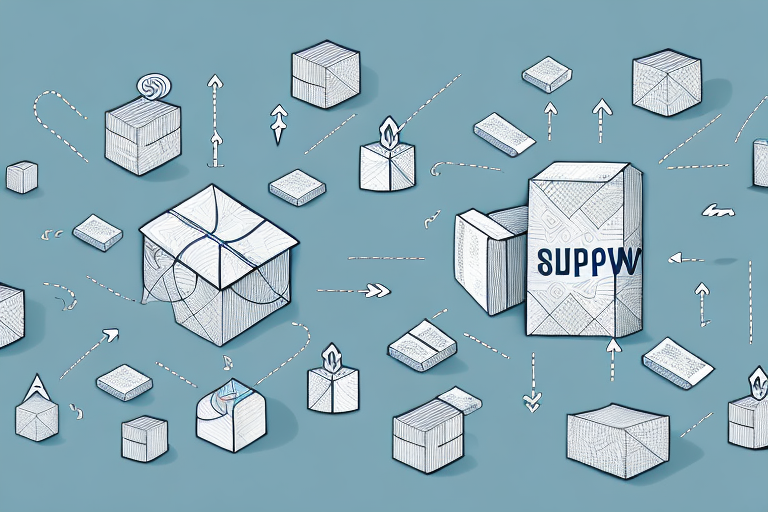The Ultimate Guide to Understanding the Supply Chain and the Role of the Consignee
In today’s global marketplace, supply chain management has become more critical than ever. It encompasses a complex network of processes involving many players, including suppliers, manufacturers, distributors, retailers, and customers. One of the key players in the supply chain is the consignee, who plays a crucial role in the logistics management of the entire process.
What is a Supply Chain and Why is it Important?
Before diving into the role of consignees, it’s essential to define what a supply chain is and why it is vital. A supply chain is a network of interdependent entities involved in the provision of a product or service required by end customers. It encompasses activities such as sourcing, procurement, production, logistics, and delivery, involving numerous stakeholders who collaborate to ensure the timely and cost-effective delivery of goods.
The efficient management of a supply chain is crucial for a business to remain competitive and profitable. In today’s fast-paced and globalized economy, it can make the difference between success and failure. According to a report by Accenture, 71% of businesses believe that supply chain resilience—the ability to respond to disruptions—is essential to their success, and 77% of executives believe that digital supply chains will be critical within the next five years.
Key Players in a Supply Chain: Explained
A typical supply chain consists of multiple players, each contributing to its efficiency and effectiveness. The key players include:
- Suppliers: Businesses or individuals who provide raw materials or components needed to manufacture a product or service.
- Manufacturers: Responsible for transforming raw materials or components into finished products.
- Distributors: Intermediaries who receive finished products from manufacturers and distribute them to retailers and end customers.
- Retailers: Businesses that directly sell finished products to end customers.
- Customers: Individuals or organizations that purchase and use the products or services provided by the supply chain.
Different Types of Consignees and Their Functions
A consignee is a person or entity named in a transport document who is entitled to take delivery of goods. In supply chain management, a consignee can be a customer, distributor, retailer, or any other party responsible for handling and managing goods during the delivery process. There are different types of consignees, including:
- Consignee as an End Customer: The final recipient of the goods who has purchased the products for use or consumption.
- Consignee as a Delivery Agent: Responsible for receiving and transporting goods to their final destination, often acting as a logistics partner.
- Consignee as a Storage Location: Responsible for storing goods until the final recipient is identified or the goods are sold.
Understanding the Role of the Consignee in Logistics Management
The consignee plays a critical role in logistics management by receiving goods, verifying their quantities and quality, and ensuring they are stored safely and securely. The consignee is also responsible for handling any damages or losses during transit and informing other supply chain players of any issues or delays. Additionally, consignees ensure that deliveries to end customers are timely and efficient, ultimately increasing customer satisfaction.
The Pros and Cons of Using a Consignee in Your Supply Chain
Using a consignee in your supply chain has several advantages and disadvantages that need careful evaluation.
Advantages:
- Reduced Costs: Consignees can help lower logistics management costs by consolidating cargo loads, leading to reduced transport expenses.
- Efficient Delivery: Consignees often provide local delivery expertise, ensuring timely and efficient delivery to end customers.
- Better Inventory Management: Consignees can offer real-time information on stock levels and replenishment needs, helping businesses manage inventory more effectively.
Disadvantages:
- Loss of Control: Businesses may need to cede some control over the delivery and handling of goods when using a consignee.
- Increased Complexity: Incorporating a consignee can add complexity to the supply chain, requiring businesses to ensure that consignees meet necessary quality and safety standards.
How to Choose the Right Consignee for Your Business Needs
Choosing the right consignee is crucial for meeting your business needs. Consider the following factors when selecting a consignee:
- Reputation and Experience: Work with consignees who have a reputation for reliability and significant experience in your industry.
- Location: The consignee’s location can impact delivery times and costs, so choose strategically.
- Cost: Evaluate the consignee’s pricing structure to ensure it fits within your budget.
- Flexibility: Choose a consignee that can accommodate your specific needs and requirements.
Best Practices for Managing Consignees in Your Supply Chain
Effectively managing consignees requires implementing the following best practices:
- Effective Communication: Maintain open and transparent communication with your consignee to address issues or delays promptly.
- Regular Reporting: Track and report on your consignee’s performance regularly to identify areas for improvement and ensure they meet service level agreements.
- Performance Measurement and KPIs: Establish performance metrics and key performance indicators (KPIs) to monitor your consignee’s performance and quality standards.
- Collaboration with Other Supply Chain Players: Build strong relationships with all supply chain stakeholders to ensure your consignee collaborates effectively, enhancing overall supply chain efficiency.
Challenges Faced by Consignees in Logistics Management and How to Overcome Them
Consignees encounter several challenges in logistics management, including:
- Delays or Disruptions: Delivery delays or disruptions can impact timely delivery and increase costs.
- Quality Issues: Ensuring that received products meet required quality standards is essential.
- High Handling Costs: Investing in specialized equipment or facilities to handle products can lead to increased costs.
To overcome these challenges, consignees can adopt a proactive approach, including:
- Collaboration with Supply Chain Players: Building strong relationships with other supply chain participants ensures collaborative problem-solving for issues or delays.
- Effective Communication: Maintain transparent communication with all stakeholders for timely problem resolution.
- Investment in Technology: Investing in advanced technologies can enhance efficiency and delivery times, leading to increased customer satisfaction.
Emerging Trends and Technologies in Supply Chain Management Impacting Consignees
Supply chain management is continually evolving, with emerging trends and technologies transforming how consignees operate. Key trends and technologies include:
- Blockchain: Enhances transparency and security in the supply chain, fostering improved trust among stakeholders.
- Internet of Things (IoT): IoT devices enable consignees to track and monitor products throughout the delivery process, leading to more efficient and effective deliveries.
- Artificial Intelligence (AI): AI helps consignees optimize inventory management and delivery processes, reducing costs and improving customer satisfaction.
Tips for Improving Collaboration between Consignees and Other Supply Chain Players
Collaboration is essential for the success of any supply chain. The following tips can enhance collaboration between consignees and other supply chain participants:
- Establish a Clear Communication Protocol: Ensure all stakeholders understand how to communicate effectively to reduce confusion and improve problem resolution.
- Recognize the Importance of Each Player: Acknowledge the critical roles each supply chain participant plays to foster trust and collaboration.
- Invest in Technology: Utilize technology to streamline communication and collaboration, enhancing overall efficiency and effectiveness.
Measuring the Performance of Your Consignee: KPIs to Track
Measuring your consignee’s performance is crucial to ensure they meet necessary quality standards. Key performance indicators (KPIs) to track include:
- Delivery Time: The duration it takes for the consignee to receive and deliver products.
- Accuracy of Delivery: The percentage of deliveries that are accurate in terms of product and quantity.
- Inventory Turnover: How quickly the consignee moves inventory through the supply chain.
- Cost-Efficiency: The cost of using the consignee relative to the overall logistics management costs.
Legal Considerations When Working with a Consignee
Working with a consignee involves several legal considerations that must be carefully evaluated:
- Insurance: Ensure the consignee has appropriate insurance coverage to protect against any losses or damages.
- Contract Terms: Carefully review contract terms between the consignee and your business to ensure they meet all legal requirements.
- Labor and Employment Laws: Verify that the consignee complies with all labor and employment laws in the country of operation.
Case Studies: Successful Implementation of a Consignee in Various Industries
Several industries have successfully integrated consignees into their supply chains. For example:
- Automotive: Automotive manufacturers often use consignees to store and transport spare parts, enhancing delivery efficiency to repair shops.
- Pharmaceuticals: Pharmaceutical companies use consignees to distribute products to pharmacies and wholesalers, ensuring timely and efficient deliveries.
- Retail: Retailers use consignees to store and distribute products to their stores, reducing logistics management costs and complexity.
Conclusion: The Future of Supply Chain Management and the Role of the Consignee
The future of supply chain management will continue to be shaped by emerging technologies such as blockchain, IoT, and AI. These technologies will enable consignees to better manage inventory, enhance delivery speed and accuracy, and improve collaboration with other supply chain players. The role of the consignee will remain crucial in logistics management, helping businesses reduce costs, improve efficiency, and ultimately increase customer satisfaction.




















